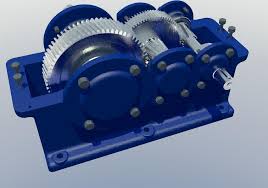Mobile:+86-311-808-126-83
Email:info@ydcastings.com
100mm Pipe End Cap Specifications and Applications for Efficient Plumbing Solutions
Understanding 100mm Pipe End Caps A Comprehensive Guide
When it comes to plumbing and piping systems, the components we choose play a critical role in ensuring functionality, efficiency, and safety. One essential component often overlooked is the pipe end cap. In this article, we will explore the significance, types, applications, and installation procedures associated with 100mm pipe end caps.
What is a Pipe End Cap?
A pipe end cap is a fitting used to seal the end of a pipe. It is designed to stop the flow of liquids or gases by creating a dead-end closure. Pipe caps are generally used in various piping systems, including plumbing, drainage, and industrial applications. The 100mm diameter is a common size used in both residential and commercial projects.
Types of Pipe End Caps
Pipe end caps come in various materials and types, each selected based on application requirements
1. Material Types - PVC (Polyvinyl Chloride) Commonly used in drainage and water supply systems due to its resistance to corrosion and ease of installation. - Steel Galvanized or stainless steel caps are often used in high-pressure applications, providing sturdiness and resistance to rust. - HDPE (High-Density Polyethylene) This plastic option is highly durable and used in both water and sewage systems. - Copper Typically utilized in water supply systems, copper caps are known for their longevity and resistance to corrosion.
2. Shape Types - Straight Caps The standard option, simply sealing the pipe end. - Reducing Caps Used when the pipe size changes, allowing a seamless transition from a larger to a smaller diameter. - Plug Caps Designed to provide a tighter seal and often include threads for screwing into the pipe end.
Applications of 100mm Pipe End Caps
100mm pipe end cap

In practice, 100mm pipe end caps find their rightful place in various applications
- Plumbing Systems They are frequently used to terminate water supply lines or to create clean-out points in waste pipes, making maintenance easier. - Wastewater Systems Effective seals on sewer lines help prevent leaks, protecting the surrounding environment and ensuring system integrity. - Industrial Use In factories and plants, these caps can be used to create a closed system of pipes used for chemical handling or transporting gases.
Installation of 100mm Pipe End Caps
Proper installation of pipe end caps is critical to maintain system effectiveness. Here’s a brief overview of how to install a 100mm pipe end cap
1. Preparation Ensure the end of the pipe is clean and free of debris. For threaded caps, check the threads for any signs of wear or damage. 2. Positioning Align the end cap with the pipe’s end.
3. Securing - For socket-type caps, apply PVC cement or similar adhesive for a secure fit. Twist the cap slightly to ensure an even layer of cement. - For threaded caps, ensure you apply Teflon tape on the threads before screwing on the cap to create a better seal.
4. Testing Always pressure-test the sealed system to ensure there are no leaks. This step is vital in preventing future complications.
Conclusion
In summary, the 100mm pipe end cap is a small but vital component in the world of piping and plumbing. Understanding the various materials and types available, as well as their practical applications, aids in making informed selections for your projects. Proper installation further ensures safety and reliability, making these caps indispensable in both residential and industrial settings. When planning your next plumbing job, consider the role of pipe end caps and appreciate their significance in maintaining system integrity. Whether for water supply, sewage systems, or industrial applications, the right end cap can make all the difference.
-
Why Should You Invest in Superior Pump Castings for Your Equipment?NewsJun.09,2025
-
Unlock Performance Potential with Stainless Impellers and Aluminum End CapsNewsJun.09,2025
-
Revolutionize Your Machinery with Superior Cast Iron and Aluminum ComponentsNewsJun.09,2025
-
Revolutionize Fluid Dynamics with Premium Pump ComponentsNewsJun.09,2025
-
Optimizing Industrial Systems with Essential Valve ComponentsNewsJun.09,2025
-
Elevate Grid Efficiency with High-Precision Power CastingsNewsJun.09,2025











